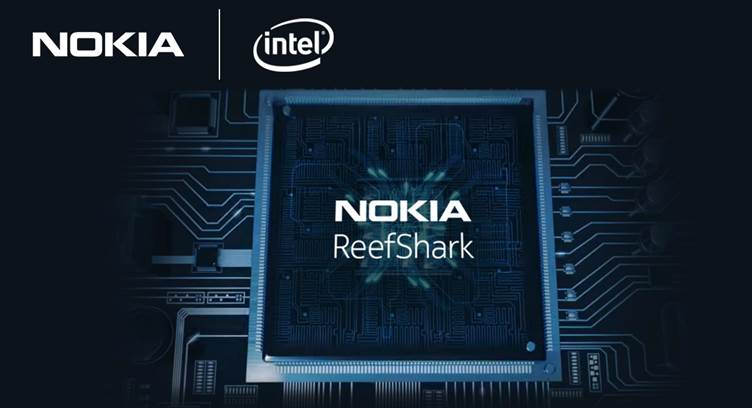Nokia recently announced today that it has collaborated with Intel on technology advancements for its 5G radio portfolio.
The companies have worked closely on the new Intel Atom P5900 processor that combines compute, connectivity and acceleration technologies. The jointly developed custom silicon solutions are included in Nokia’s AirScale radio access products being shipped worldwide as part of its 5G “Powered by ReefShark” portfolio. By adopting ReefShark widely in its AirScale portfolio, Nokia is significantly boosting performance and lowering the energy footprint of 5G network rollouts. In addition, Nokia will continue to adopt the latest general purpose Intel Xeon processor in its AirFrame cloud data center solution.
The collaboration between the companies highlights Nokia’s continued focus on the development of its 5G portfolio, strengthening AirScale and further advancing the capabilities of its ReefShark chipset. ReefShark chipsets leverage the latest silicon chip design technologies and manufacturing capabilities. This results in superior data throughput and lower energy consumption to support Nokia’s 5G AirScale network solutions. Nokia is working with multiple partners to support its ReefShark family of chipsets, which are used in many basestation elements.
To realize the benefits of a common architecture from cloud to edge, Nokia and Intel will further their collaboration by incorporating the latest Intel Xeon processor technology in Nokia’s cloud infrastructure. Nokia’s AirFrame data center solution for edge and core also uses the latest second generation Intel Xeon Scalable processor with built-in AI acceleration. The processor is also included in both Nokia’s AirScale all-in-cloud virtual RAN (vRAN) and 5G core solutions to meet the requirements demanded by 5G technologies.
Tommi Uitto, President of Mobile Networks, Nokia
5G networks need to support billions of devices and machines, and this massive increase in volume and scale means that existing infrastructure and components must evolve rapidly, adopting technologies and techniques to enable to deploy 5G networks quickly.
Dan Rodriguez, Corporate VP and GM of Intel;s Network Platforms Group
Through our collaboration with Nokia, our broad portfolio of products and ASIC capabilities, we are showing the value that can be realized with a consistent, high-performance architecture across the intelligent 5G network.


















